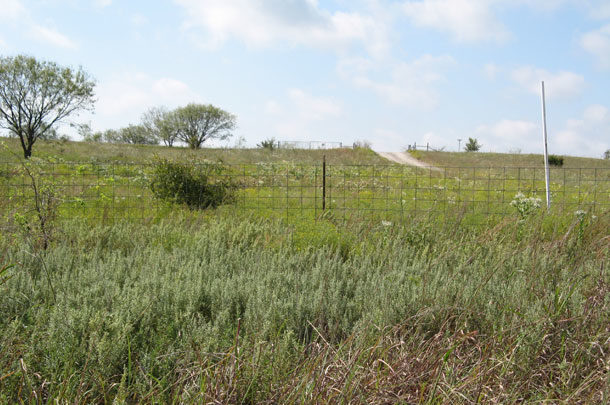In addition, certain weed species are potentially poisonous to livestock. Considering these negative impacts, it may be desirable to initiate weed management strategies.
In general, weedy plants produce low forage yields and are considered to be poor quality. However, weeds are the primary diet for certain ruminants such as sheep and deer. Dry matter digestibility of several weed species during their early vegetative stage of growth is high and comparable to seeded forage species. Crude protein levels at these early stages of growth are also adequate for consumption by cattle. Like many forage grasses, digestibility and crude protein decline as weeds mature.
Learn what you need to control
“Scouting pastures is the foundation of a sound weed management program, but is often overlooked,” says Dr. Brent Sellers, University of Florida. “Scouting involves routinely walking or driving through pastures and identifying weeds.”
Weed identification can be a major hurdle in designing a weed management plan. Many state agricultural universities, Weed Science Society of America (WSSA) and USDA Natural Resources Conservation Service (NRCS) maintain computerized plant identification keys and photograph galleries.
Plants are listed by both their common and scientific names on these sites. When you click on a name, a photo of that particular plant appears. Identification of your plant is accomplished by matching it to the correct photograph. You may have to click on several plant names before you find the right one. It is best to use the website that lists the plants that grow in your area. The WSSA and NRCS websites are national in scope, whereas the university galleries tend to be regional.
“Scouting pastures and identifying weeds defines the scope of the problem and allows best management practices to be implemented in a timely fashion,” Sellers says.
“The number of weeds, the species present and their locations are important. Note the dominant species as well as uncommon or perennial weeds. The management strategies adopted should focus on controlling the dominant species while preventing the spread of less common species. If not managed proactively, the less common weeds in a pasture may become future dominant weed problems.”

Management practices
Dr. JD Green, with the University of Kentucky, says, “The way a pasture is managed can have a major impact on the presence of weedy plants. Production practices that result in overgrazing and low fertility levels favor emergence, propagation and growth of weeds. The ideal approach is to incorporate practices that are more adaptable to the growth of the desirable forage species and less favorable for unwanted plants. Although there are exceptions, most weeds do not compete well with a dense stand of desirable forage species.”
Green recommends the following pasture management practices:
- Maintain proper soil pH and fertility levels.
- Use controlled grazing practices.
- Mow at the proper timing and stage of maturity.
- Allow new seedings to become well established before use.
- Renovate pastures when needed.
Herbicides
“Herbicides can be another useful tool for weed management in pastures and hayfields,” Green says. “They should be used where appropriate and when cost effective.”
Dr. Rocky Lemus, Mississippi State University, says, “When applying herbicides, calibrate and use proper spraying equipment. Equipment calibration is very important to make sure that recommended rates are applied. Using the proper equipment and spraying during favorable conditions, such as low wind velocities, will minimize drift of herbicides to sensitive crops.”
Choose the proper herbicide and application rate for your particular weeds. This information can usually be found in the current herbicide application guidelines issued by each state extension service.
Many broadleaf herbicides kill legumes, so they should not be used in pastures where legumes are present. Also keep in mind that some herbicides have long-lasting soil residuals that can affect replanting or renovation of desired forage species.
“Spray weeds early in the season when they are less than 6 inches tall to be cost effective,” Lemus says. “As plants mature, herbicide efficacy might decrease, which translates to higher rate and cost per acre. Lower than recommended application rates will not provide consistent weed control, while excessive rates may cause injury to the forage. Timing of the herbicide application is critical because you must eliminate seed production from the annual plants, which will help prevent future reinfestations.”
“A program that integrates several different control strategies is generally more successful than relying on only one method,” Green says. “Weeds present at the time of herbicide application may be controlled, but if the forage stand is not vigorous and actively growing, new weed seedlings will soon emerge and occupy the bare areas that remain. Without proper use of mechanical control methods and good cultural practices, herbicide use will not be beneficial.” FG
Robert Fears is a freelance writer from Georgetown, Texas.
PHOTOS
PHOTO 1: Weeds compete with forages for sunlight, space and nutrients.
PHOTO 2: Proper stocking rates are an important part of weed management. Photos by Robert Fears.








